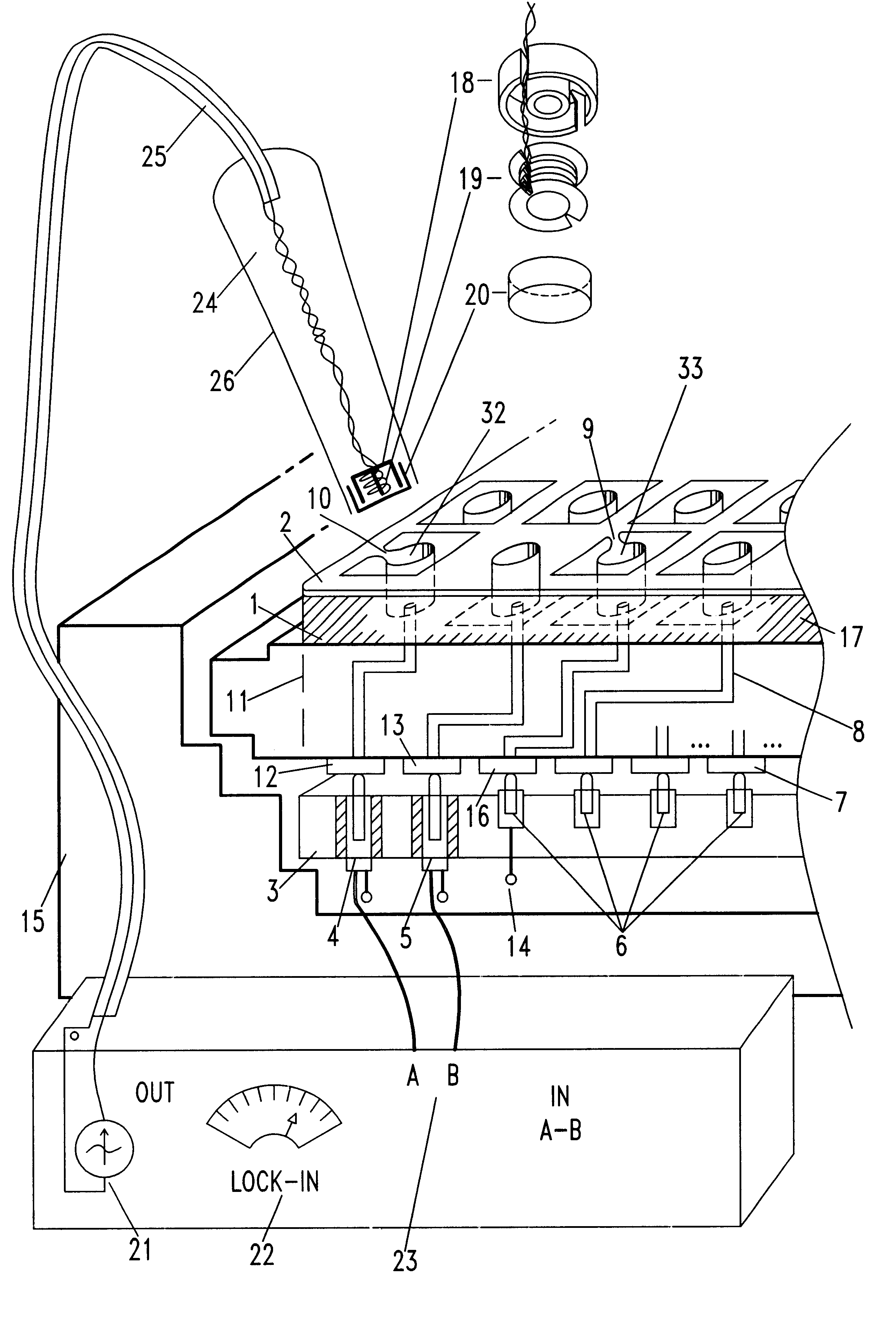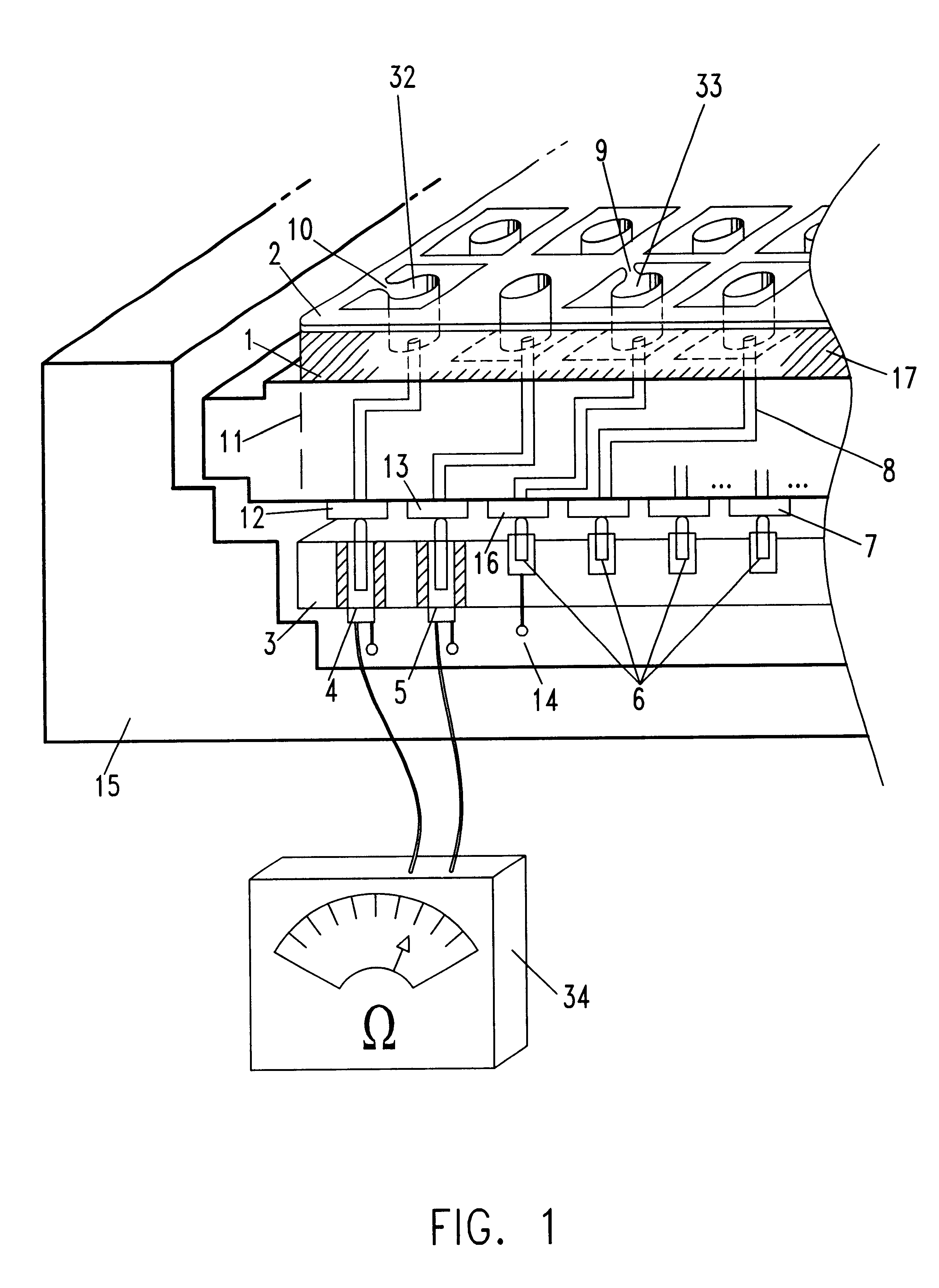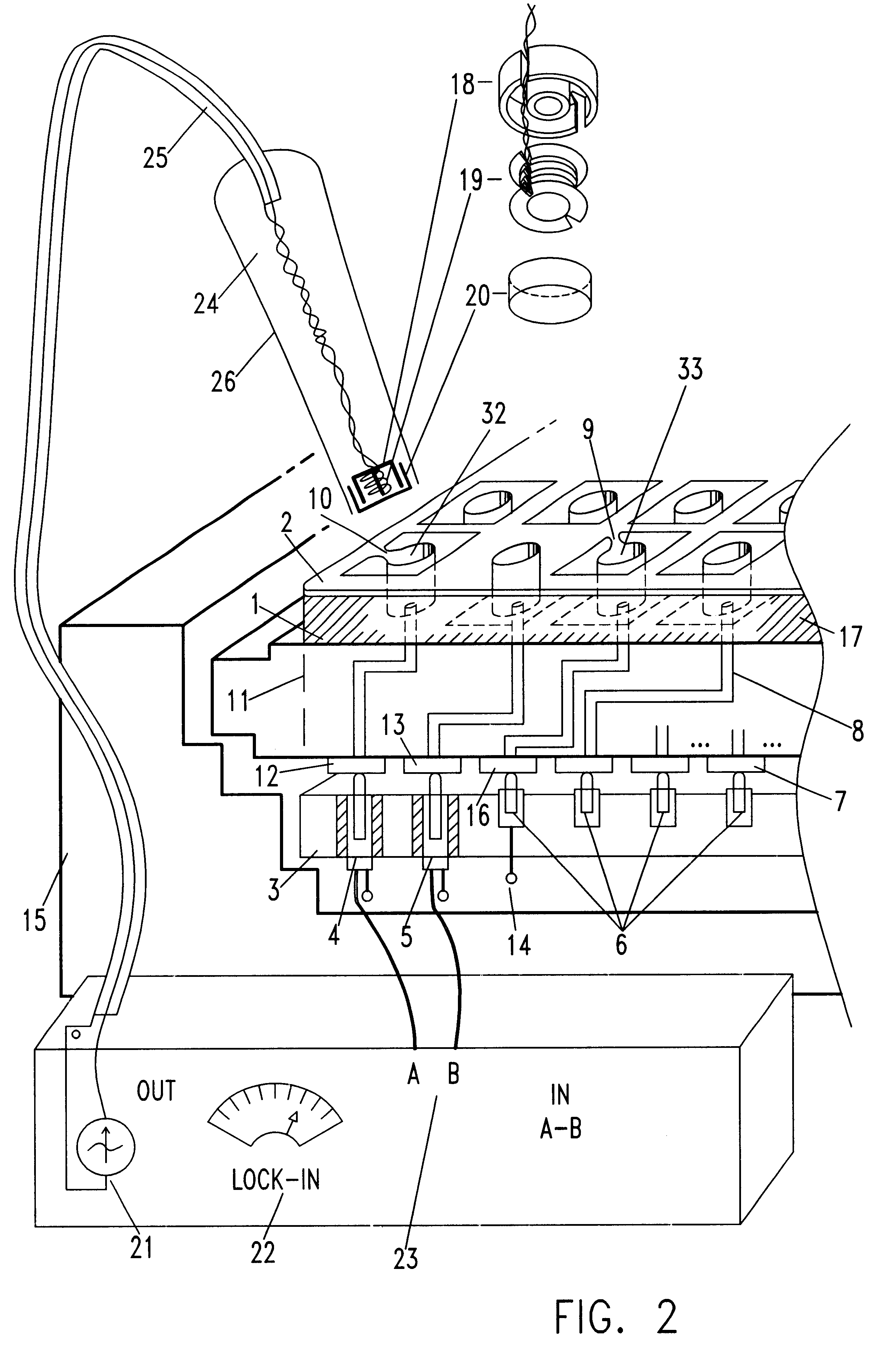Method for detecting power plane-to-power plane shorts and I/O net-to power plane shorts in modules and printed circuit boards
a technology of power planes and modules, applied in the field of detecting power planetopower plane shorts and i/o netto power plane shorts in modules and printed circuit boards, can solve the problems of generic pcb (printed circuit board), shorts between power planes in electronic packages such as mcm-d, and posing several significant yield and diagnostic problems, and achieves low cost and high yield and diagnostic leverage.
- Summary
- Abstract
- Description
- Claims
- Application Information
AI Technical Summary
Benefits of technology
Problems solved by technology
Method used
Image
Examples
Embodiment Construction
Referring now to FIG. 1, there is shown a schematic diagram of a module or a board (or substrate) showing a short between power planes, and a short between an I / O net and a power plane.
Practitioners of the art will appreciate that I / O nets refer to any and all wiring nets leading to a module or board pin. Hereinafter, they will be referred to I / O nets.
A module or board 11 is mounted on a fixture 15. Bottom surface metallurgy (BSM) pads referenced by numerals 7, 12, 13 and 16, provide connections to the wiring throughout the module or board, as well as to the power planes. Wiring 8 connects the BSM pads to the top surface metallurgy. Voltage BSM pad 12 connects power plane 1 to TSM pad 32. Plane 1 is depicted shorted to plane 2 by way of short 10. Voltage BSM pad 13 is connected to power plane 2. I / O BSM pad 16 is connected internally to TSM pad 33. Power plane 2 is shown shorted to the I / O net associated with TSM pad 33 by way of short 9. Insulation 17 separates the power planes and...
PUM
 Login to View More
Login to View More Abstract
Description
Claims
Application Information
 Login to View More
Login to View More - R&D
- Intellectual Property
- Life Sciences
- Materials
- Tech Scout
- Unparalleled Data Quality
- Higher Quality Content
- 60% Fewer Hallucinations
Browse by: Latest US Patents, China's latest patents, Technical Efficacy Thesaurus, Application Domain, Technology Topic, Popular Technical Reports.
© 2025 PatSnap. All rights reserved.Legal|Privacy policy|Modern Slavery Act Transparency Statement|Sitemap|About US| Contact US: help@patsnap.com



